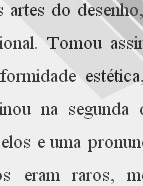

................................
he built an enormous and pivotal set of works, focused on painting, architecture and art industries, where the following titles are worthy of mention: Os Músicos Portugueses [Portuguese Musicians] (1870), Luísa Todi (1873), Albrecht Dürer e a Sua Influência na Península [Albrecht Dürer and his Influence in the Peninsula] (1877), A Reforma Geral do Ensino de Belas-Artes em Portugal [The General Reform of Fine Arts Education in Portugal] (1877-1880), Miscelânea Artística [Art Miscellany] (1878-1881), A Pintura Portuguesa nos Séculos XV e XVI [Portuguese Painting in the 15th and 16th Centuries] (1881), História da Ourivesaria e Joalharia Portuguesa [History of Portuguese Jewellery and Goldsmithery] (1882), Exposição de Cerâmica [Ceramics Exhibition](1883), Da Arquitectura Manuelina [On Manueline Architecture] (1884), Indústrias Portuguesas [Portuguese Industries](1886-87), O Museu Municipal do Porto [the Municipal Museum of Porto] (1889), Relação da Embaixada Famenga [Inventory of the Flemish Embassy] (1428-1430) and Viagem de Jehan Van-Eyck a Portugal [Journey of Jehan Van-Eyck to Portugal] (1898), Catálogo da Cerâmica Portuguesa: Museu Municipal do Porto [Portuguese Ceramics Catalogue: Municipal Museum of Porto](1909), Arte Religiosa em Portugal [Religious Art in Portugal] (1914-15) and Arte Românica em Portugal [Roman Art in Portugal] (1918).
Until the end of the 19th century, no one deserved the title of art historian so aptly. In the MA dissertation A Historiografia Artística Portuguesa: De Raczynski ao dealbar do Estado Novo [Portuguese Art Historiography: From Raczynski to the dawn of the Estado Novo [New State]] (1993), a prosopographical sketch of one hundred and seventy-six active Portuguese authors between 1800 and 1940 was made. These scholars were men (99%), often holding degrees, but only in 11% of the cases with an art component: Law (16%), Letters (13%), commercial and technical training (12%), Theology (12%) and Medicine (9%). For the period under study, studies on art were a secondary activity for the authors, whose profession was clearly different: 26% were teachers, 13% librarians or conservators, 12% politicians or diplomats, 8% civil servants, 8% military personnel, 7% ecclesiasts and 5% artists. Art was not their only object of study. Among the other subjects covered were fiction (short story, novella, novel, drama) and poetry (15%), literature and Portuguese language studies (15%) and history (14%). Subjects such as local monographs (7%), archaeology (6%), biography (4%) and heraldry and genealogy (4%) ranked far lower.
